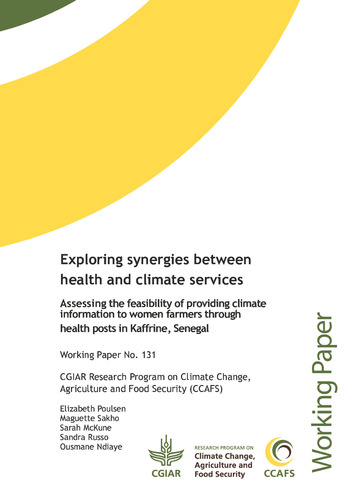Exploring synergies between health and climate services: Assessing the feasibility of providing climate information to women farmers through health posts in Kaffrine, Senegal
Abstract
This report details the results of research undertaken in Kaffrine, Senegal in May and June of 2015, which explored the possibility of utilizing rural health posts as a channel of communication of climate information to female farmers. The hypothesis was that since health posts often aim to reach women and other vulnerable populations in rural areas, and because weather events often pose risks to human health, the health posts may have an interest in weather and climate information and may have the means to communicate this information to rural women. A total of 13 key informant interviews exploring this hypothesis were conducted in the Kaffrine region; nine at health posts, and four at other relevant organizations in the region.
The interviewees indicated that all weather and climate information that could impact agriculture could also impact human health, and thus all health post staff interviewed expressed interest both in receiving forecasts and in distributing the information they receive. For example, because health posts organize major community health campaigns about malaria just prior to the rainy season each year, they are interested in receiving the forecasted start date of the rainy season, and in communicating this start date to the residents of their region. Many other examples of climate and human health overlap are explored in this report.
Most interviewees indicated that they would prefer to receive climate information through email or text messages, and said that they would distribute the forecasts via the same channels that they utilize to distribute health information. These channels include community meetings, door-to-door visits, women’s association meetings, mosque loudspeakers, radio, television, and posters or other publicly displayed written information. All of these channels have a high probability of reaching women and other vulnerable populations in rural areas. This report details additional channels of communication that could be utilized by organizations in cases where the health posts are unable to communicate climate information.

